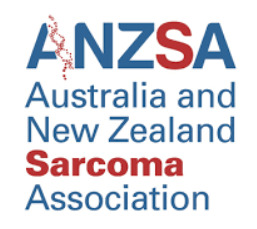
Advanced Non Melanotic Skin Cancer
What is keratinocyte (non-melanoma) skin cancer?
The most common cancers in Australia, thankfully the majority are not sinister.
2 main types and a third group are
- BCC – Basal cell carcinoma, 70% which begins in the basal layer of the epidermis and can appear anywhere. Mainly appears on parts of the body that receive high or intermittent sun exposure
- SCC – Squamous cell carcinoma, 30% and begins in the top layer of the epidermis and develops where there is most exposure to the sun
- Not invasive cancers, Keratinocyte dysplasias include solar keratosis, Bowenoid keratosis and squamous cell carcinoma in-situ (Bowen's disease). These may require surgical management as may become invasive skin cancers.
What causes skin cancer?
Basically too much exposure to UV radiation from sunlight and non-natural sources such as sun beds (solariums)
More common if you are older. The risk is also higher
- previous or family history of skin cancer
- fair or freckled skin, especially if it is easy to get sunburnt
- dark skin produces more melanin, which protects against UV radiation; possible to develop skin cancer
- hair and eye colour, red or fair hair and light eyes
- weakened immunity (leukaemia, cancer treatment, post surgery)
- moles that are not regular and sun spots
When should I see my doctor?
Check own skin once a month to find any new or changing spots.
See your doctor if you notice any changes to your skin, such as:
- 'ugly duckling' — a spot that is unique and different to others
- spot that changes; this can be shape, size, texture or colour
- a sore that persists
- spot that is symptomatic – bleeds on touch or itches
How is skin cancer diagnosed?
The doctor will take a full history and clinical examination and a dermatologist may use a dermatoscope (a magnifying glass for the skin) further check any suspicious spots
You may require a skin biopsy. An excision biopsy is a small procedure that can be done by your GP specialist, your dermatologist or a surgeon. Starts with a local anaesthetic to numb the region, a scalpel is used to remove the spot along with a small area of surrounding skin. The wound may be closed with few stitches and a small dressing and removed mole is sent to pathology for examination.This is where part or all o f the lesion is removed and looked at under a microscope.
What is the role of Surgical treatment for skin cancer?
Most common treatment, if cancer cells are found at the margin after a biopsy, further treatment is required.
Wide Excision
The first biopsy usually diagnoses the skin cancer, wide excision is recommended to minimise the risk of the cancer coming back.
We remove a margin around the site of the original lesion, and the size of margin depends on a few factors. Primary Closure is usually used, where stitches are used to close the wound, however larger excisions may require skin grafts or skin flaps for reconstruction.
Other treatments
For some cancers, techniques like Mohs surgery (microscopically controlled excision), curettage and electrodessication (cautery) may be used. These are usually performed by a dermatologist.
Topical treatments include applying cream, lotion or gel locally on the skin.
Cryotherapy: liquid nitrogen can freeze and remove sunspots and small BCCs.
Photodynamic therapy, using cream that makes the cancer sensitive to light, and then using a light source.
This intraoperative video below shows the stitch marking of the skin cancer that is to be removed. The marking helps identify the margins, so that the pathologist can provide an accurate assessment of clear margins.
WHAT IS A MULTI DISCIPLINARY MEETING?
Multidisciplinary teams is the best practice in the treatment planning and care for patients with cancer. It is an integrated team approach to health care in which all members of the oncology team and allied health care professionals meet. All the investigation details, the presentation, pathology and imaging along with patient preferences are discussed. They consider all relevant management options and collaboratively develop a treatment and care plan for each individual patient.
RADIATION THERAPY
This treatment uses x-rays to kill cancer cells by damaging their DNA and since cancer cells cannot repair themselves, they die. They are broken down and eliminated by the body.
The treatment is carefully planned to allow the normal cells to repair themselves and minimise side effects. The total dose and the number of treatments you need depends on the size and location of the skin cancer or site, your general health and other concurrent medical treatments.
This radiation can come from a radiation machine or radioactive material placed in your body near the cancer.
Side effects of this treatment can be
- Temporary or permanent loss of hair in the area
- Skin irritation
- Temporary change in skin colour
- General fatigue
- Other side effects depending on the area of the body
















